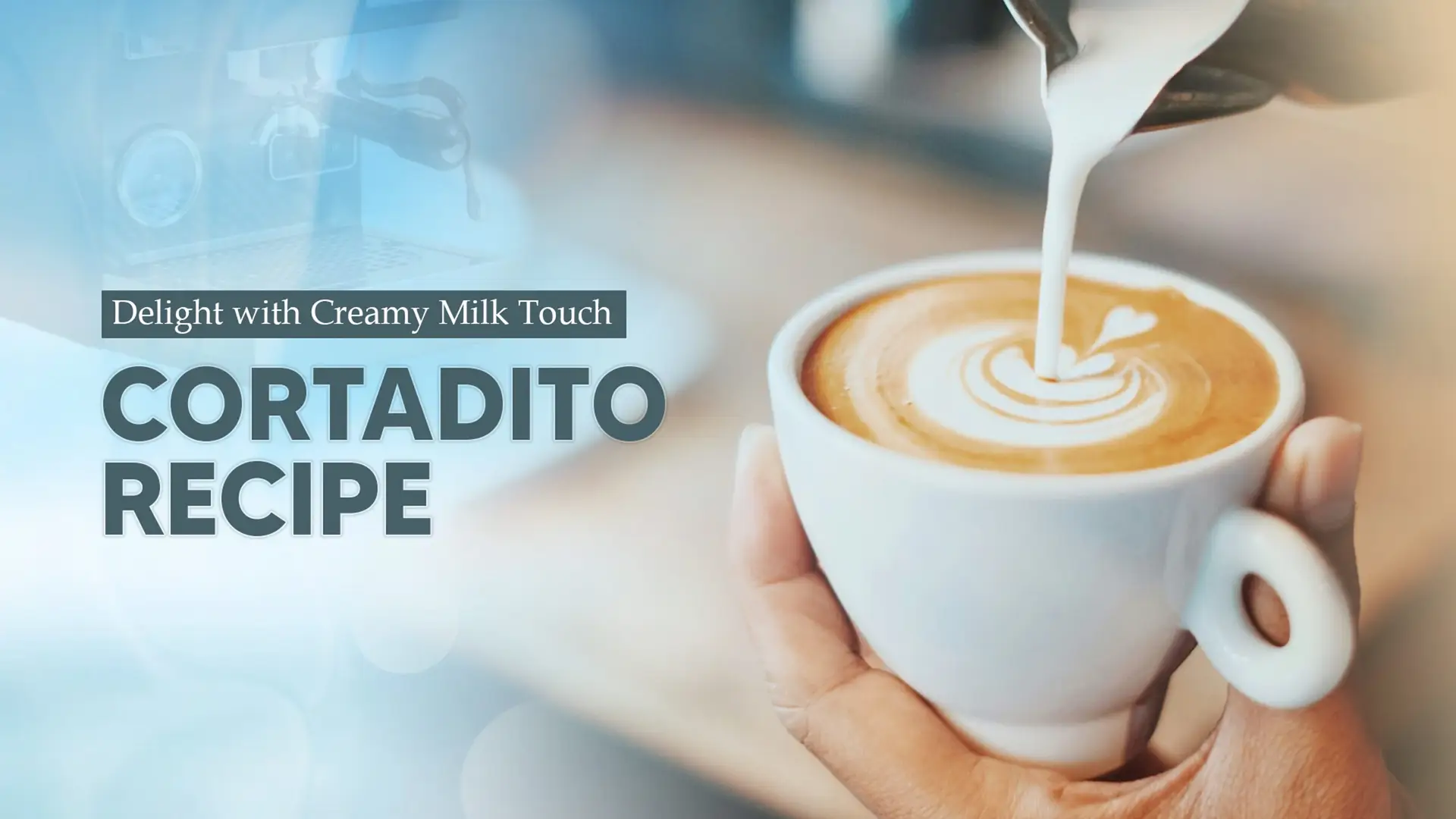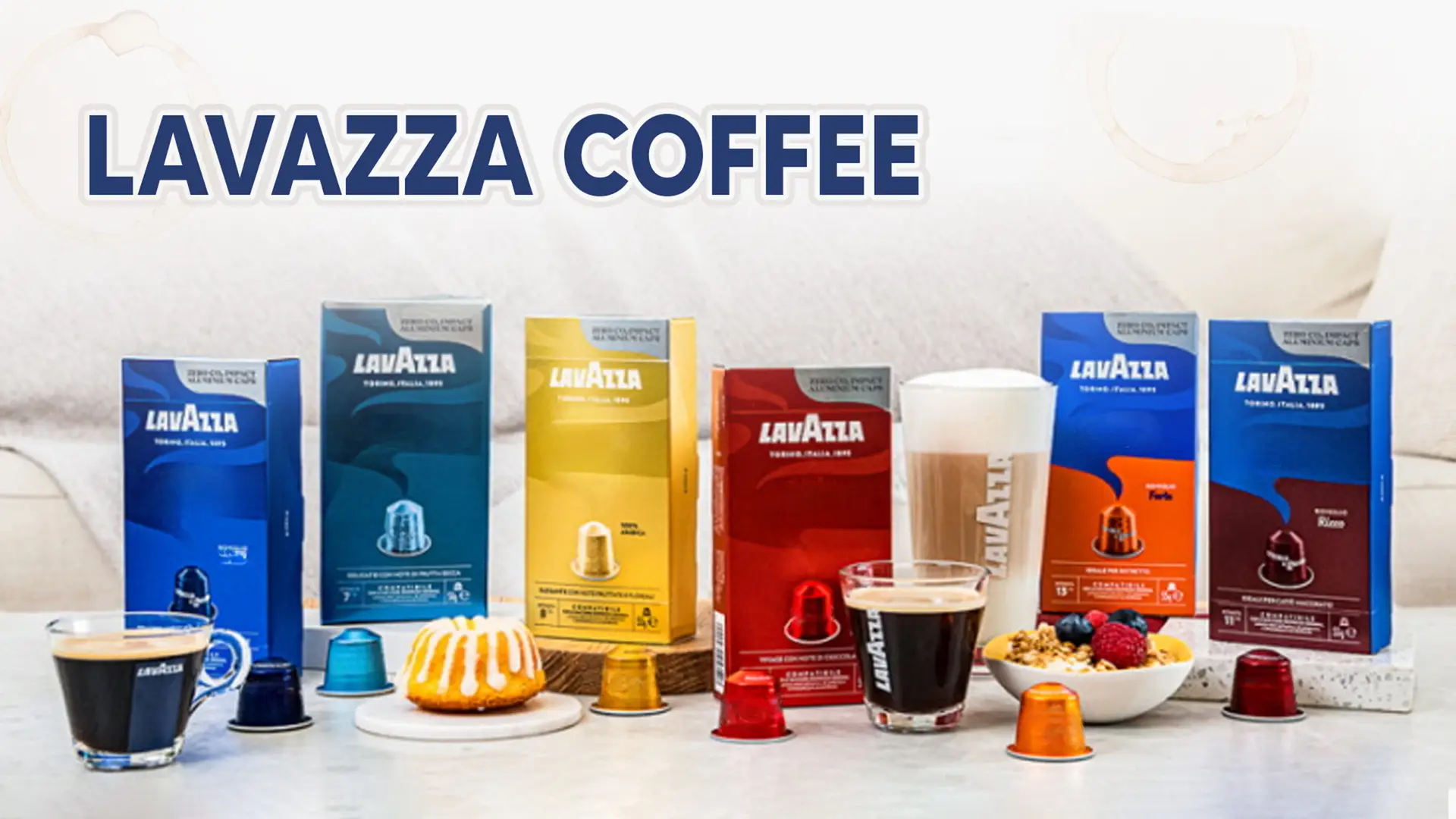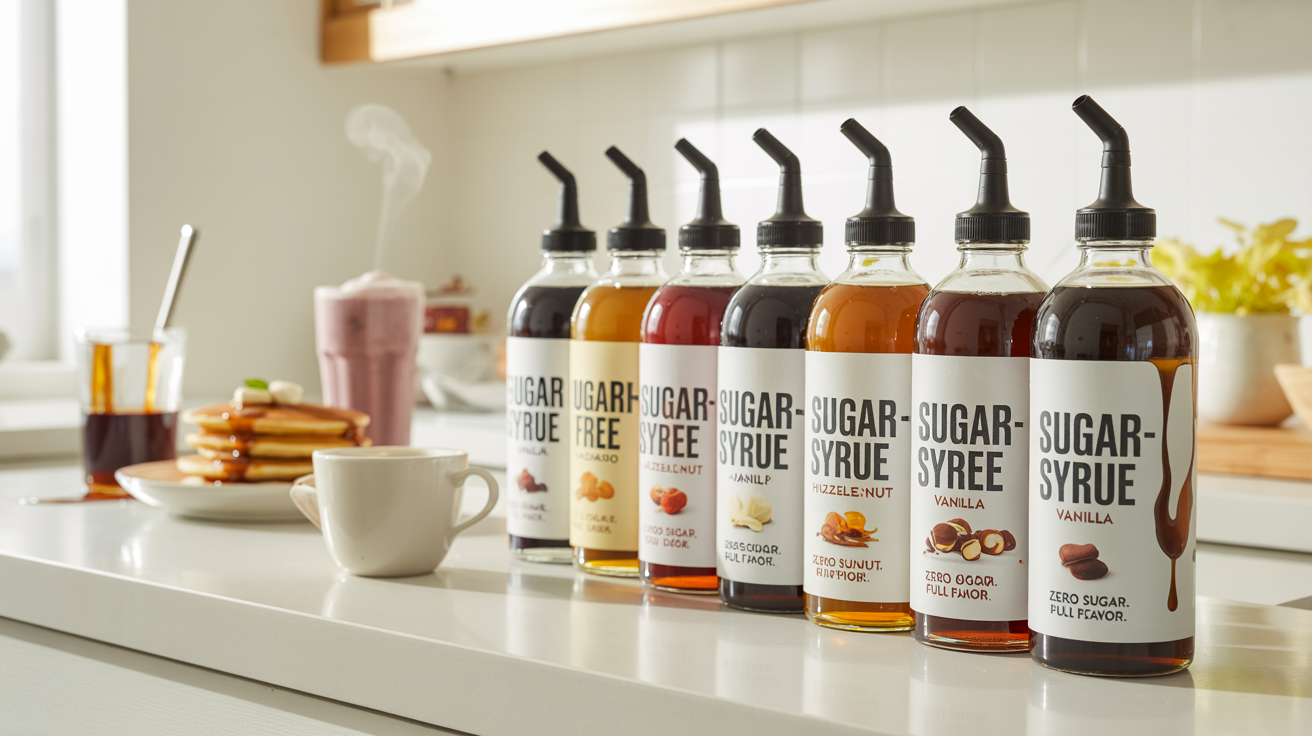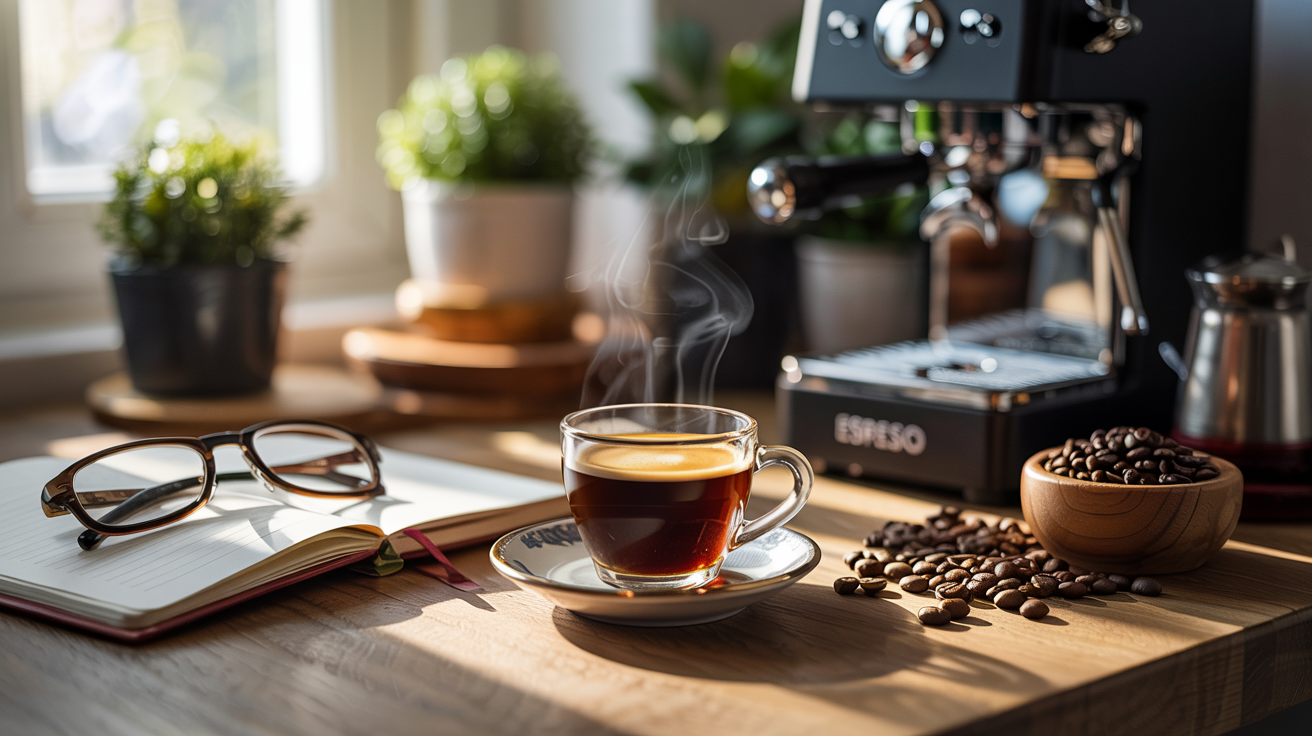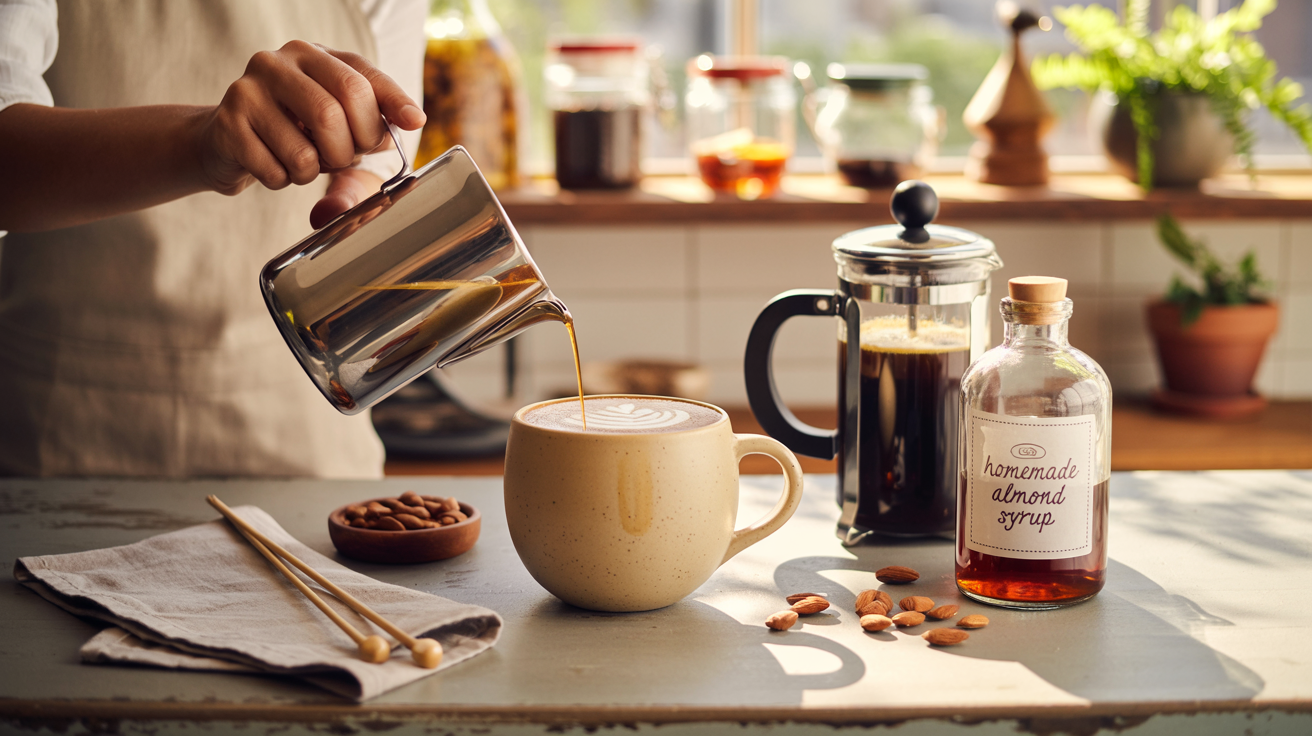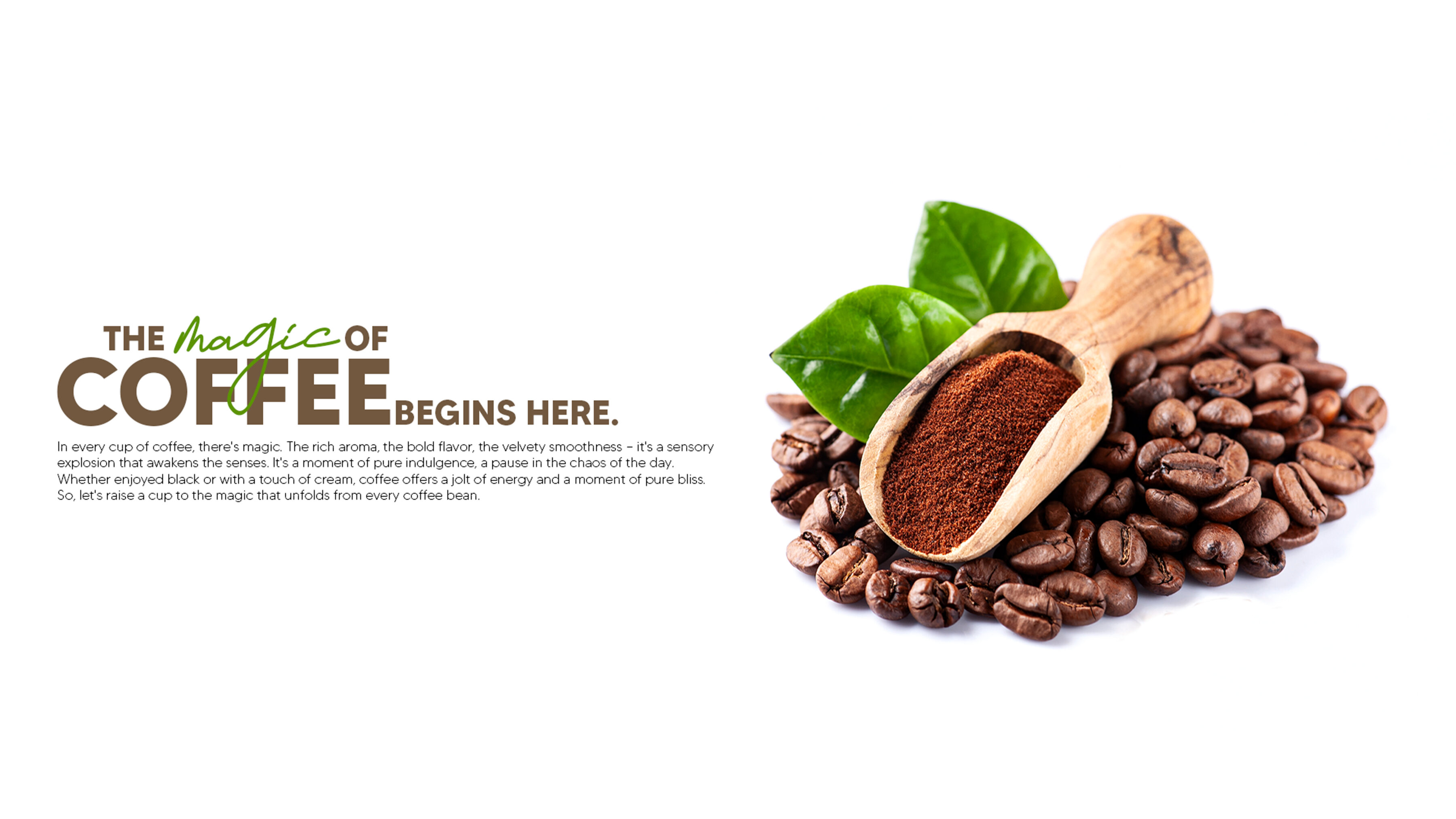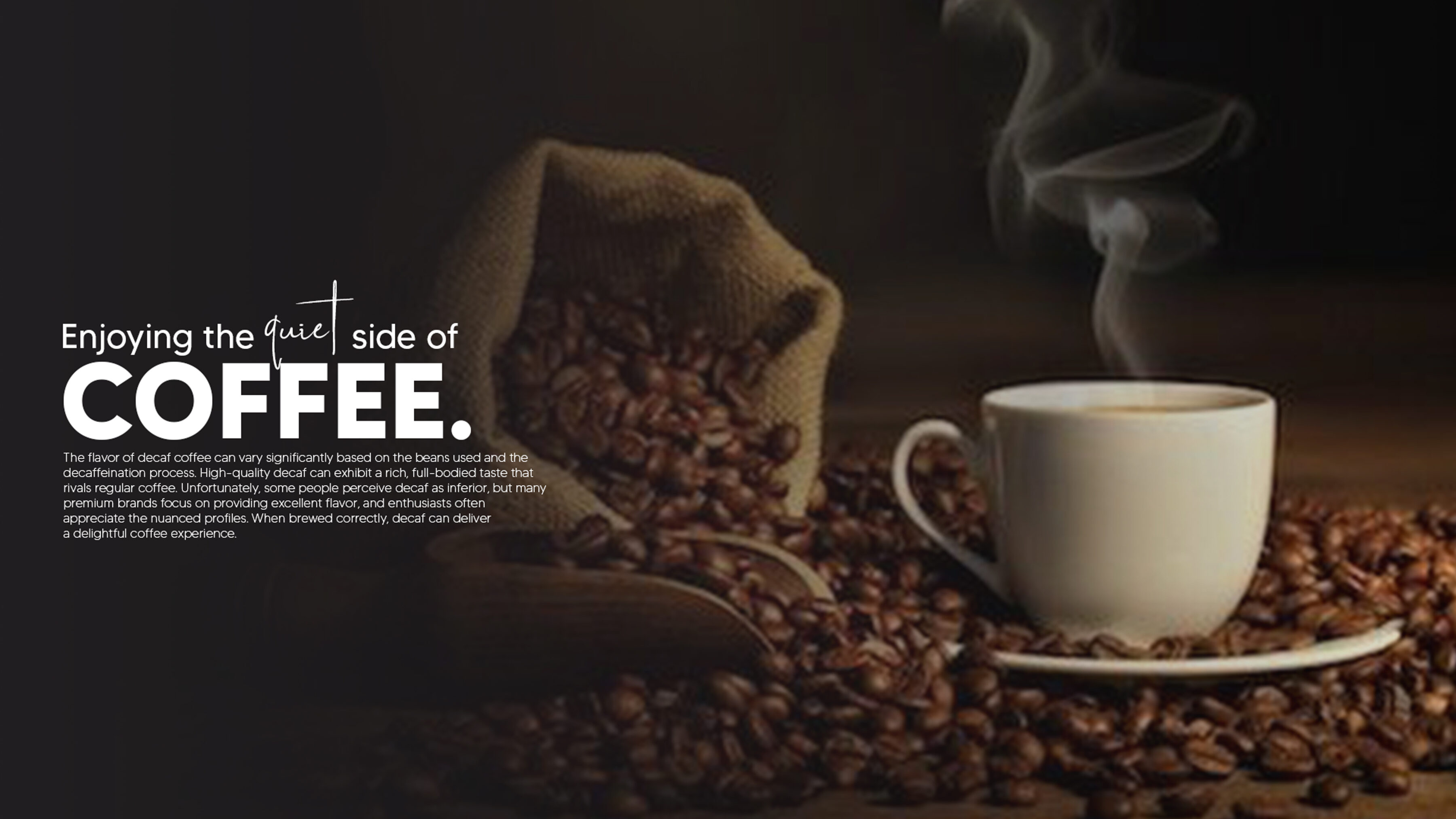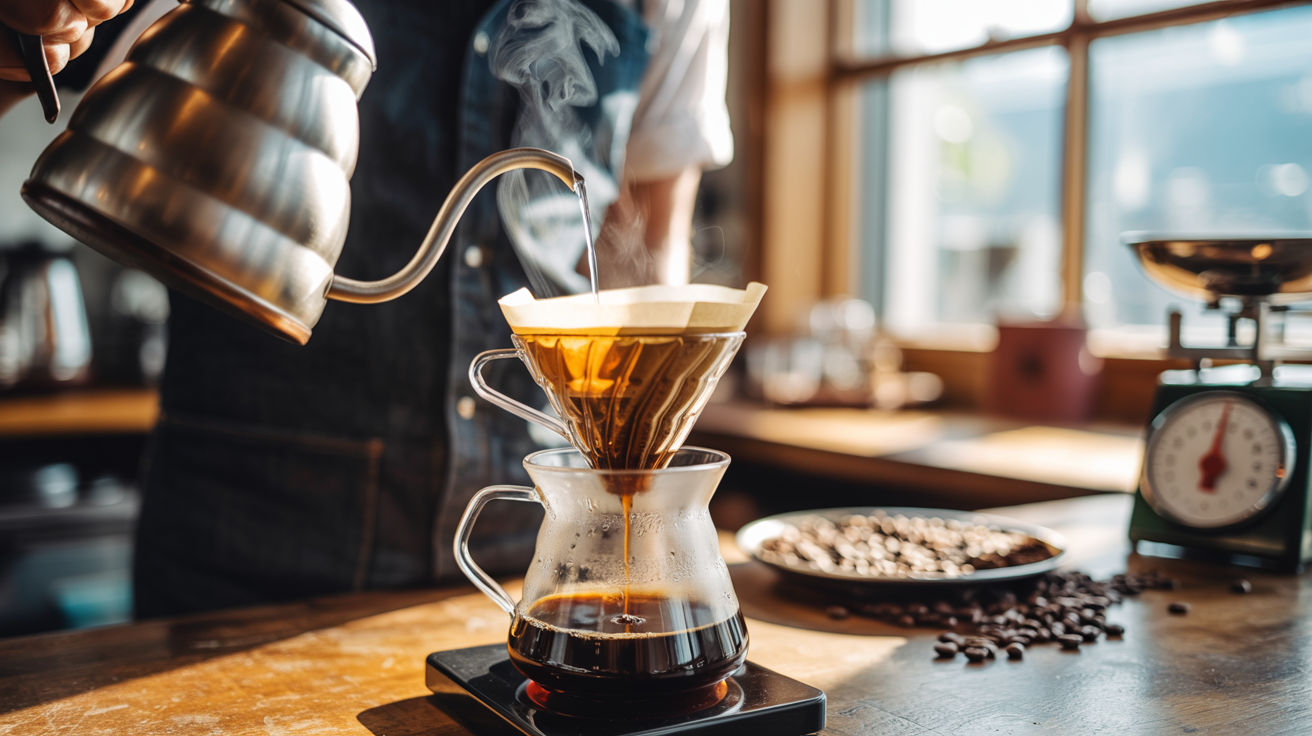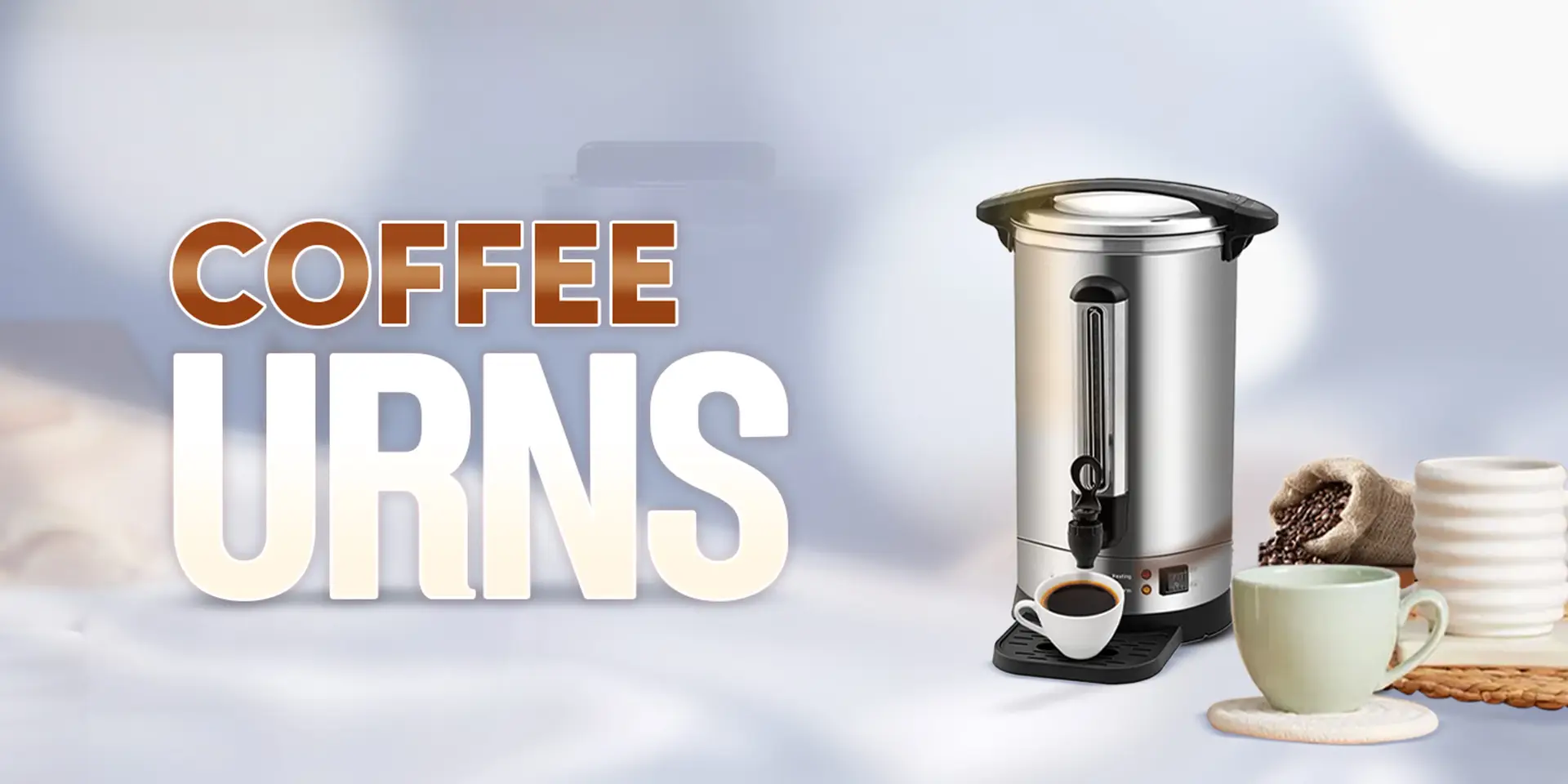Cortadito Coffee: Why This Cuban Drink Should Be Your Next Favorite Cortadito Coffee: Why This Cuban Drink Should Be Your...
Read MoreThe Ultimate Guide to Perfect Espresso Grounds

The Ultimate Guide to Perfect Espresso Grounds

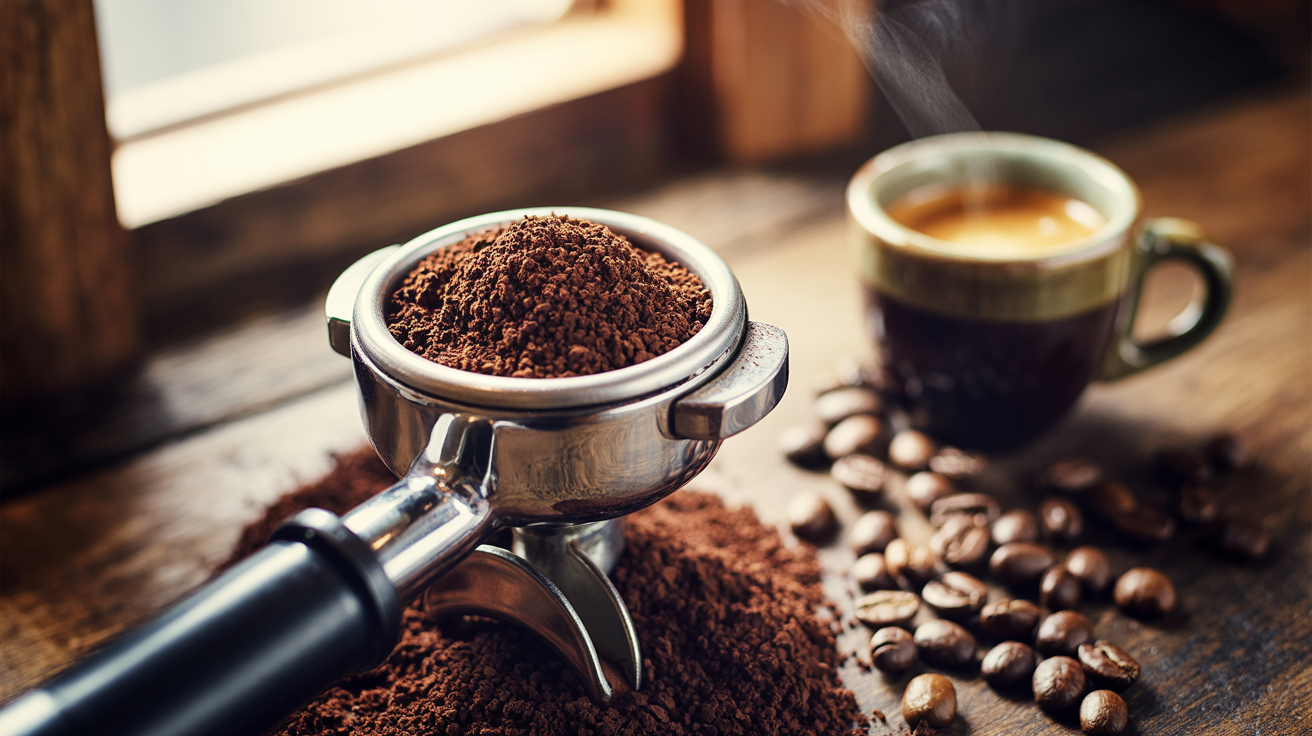
Introduction: Mastering Espresso Grounds for Great Coffee
The espresso had better be good in every sense. The ideal shot is determined by things like bean freshness, grind size, and how you prepare it. A shot of espresso is poured with a dollop of cream resting on top. Crush your coffee routine by using a burr grinder for smooth, even grounds and keeping them fresh in an airtight container to hold in all the bold, delicious flavors. It’s seriously essential that 195-205°F brewing temperature, tamp pressure, and even extraction time (25-30 seconds) are key numbers in order to achieve a perfect neutral extraction. Lovers of coffee can have a quality espresso experience that employs good beans and practices at their best.
1. What Are Espresso Grounds?
Explanation of espresso grounds and their role in brewing espresso.
The secret to a great espresso is all in the grind of the beans. Water extracts flavors, so the size of your grind will affect how much of a particular flavor is extracted. Espresso grounds are, in fact, finely ground beans that are specially calibrated to be used with espresso machines. A grind too coarse and the water rushes through it, failing to extract enough flavour. If it is too fine, the water is held up and takes much longer to get through; this can lead to over-extraction. The perfect grind makes water extraction easy for the right amount of oils and flavors, delivering you a smooth balance shot when appropriately extracted, and is a staple to any rich and full-bodied espresso.
The process of grinding coffee beans to the right consistency for espresso.
Grinding coffee beans to the proper texture for espresso is ultra-important when making a shot. The size of the grind impacts how much water can extract flavors and oils from coffee. Espresso needs the beans to be ground extremely fine, almost to a powder, like sugar that has been granulated. It’s because the water travels too fast (due to a coarser grind), which produces weak and under-extracted espresso. On the other hand, a grind that is too fine might cause bitterness and over-extraction. Grinding the perfect amount of fresh coffee, you will make sure your espresso shots are always as good as they could be and that you get pure velvety crema for authentic professional quality coffees.
2. Common Grounds Espresso: What You Need to Know
Definition and significance of common grounds espresso.
Common Grounds Espresso Common grounds espresso are coffee beans that have been ground to a standard espresso grind specification. This is an important term to know, because it represents the average grind size you’ll use in many espresso machines. These espresso grounds are neither too delicate nor too grainy – It’s just perfect for your everyday espressos. Between the two, we feel that the pressure pods are too easy to use, which also means they can hit with inconsistent strength curves that muddy up the flavor extraction. However, understanding a thing or two about common ground espresso gives you room to determine whether or not a grind change is necessary for that custom espresso shot experience.
How to identify quality espresso grounds for consistency in brewing.
You need to select the coffee grounds very carefully if you want a good espresso. More: Espresso grounds should be uniform, like sand when ground. A good cup of common ground espresso will cut it to get most of the machines started, but you have to be consistent about shaking it. A less-than-desirable flavor is due to an uneven grind, which means extraction issues. Fresh coffee is equally essential to the extraction. It’s not just a matter of having as fresh as possible, but also the evenness with which they’ve been ground will have an impact on the quality of your grind and serve, so keep an eye on that as well to ensure you’re pulling consistently robust shots; all around, just better coffee.
3. Best Ground Espresso: Choosing the Right Beans
Key factors for selecting the best ground espresso beans.
Choosing the best ground coffee beans is one of the essential steps when looking to pull a perfect shot. It’s freshness that counts most. Grind the beans just before brewing in order to maintain their aroma. The espresso grinds need to be processed just right for that perfect brew, and after being ground, they should have the same size and the same quality in terms of extrusion. You must also take into consideration the profile of roast and always go darker because espresso requires a robust flavor. And make sure you shop around for beans from a reputable source to ensure quality. For better or worse, the beans you use shape how strong your shot is and what it’s going to taste like.
The importance of freshness and grind size in brewing quality espresso.
Great espresso depends on the freshness and fineness of the grind. The best ground coffee is one made of beans that were just roasted, and we all know old coffee doesn’t have oils anymore and will taste flat.The size of the grind is also very important. If it’s too coarse, the water will run through too fast and not get all the tastes out. Too much, and you end up with over-extraction, aka bitterness. For the best espresso, a consistent fine grind allows for fluid water to evenly pass through the coffee. Leaves no residue or clogs. Easy to clean. The ceramic burr will not produce bad, great, or lightweight. A combination of freshness and grind is essential to full-bodied, flavorful, non-bitter espresso, which is so vitally important in most coffee drinkers’ enjoyment.
4. Ground Espresso Beans: Types and Flavor Profiles
Different types of espresso grounds and their impact on flavor.
Just in case, here are varieties of coffee beans to welcome your espresso! Arabica beans bring smooth sweetness, but Robusta beans bring more of a bold and bitter flavor. Grind is the number one most important: For espresso, you grind fine to get that perfect flavor profile. As a rule of thumb, the darker you roast your coffee, the more full-bodied and strong your espresso will be, with more chocolaty flavors, while lighter roasts offer a complex, bright profile. Understanding this distinction lets you choose the right bean and roast for the espresso flavor you prefer with just the right balance.
Choosing Ground Espresso Beans to Match Your Taste
The type of ground espresso beans you choose is essential to brewing the perfect cup according to your taste. First up, give some thought to the roast level. Dark roasts are full-bodied, sweet, and intense, while lighter roasts have delicate, lively, or floral notes. Arabica beans make for a smoother, sweeter ground coffee and will be well received by those who prefer their brews on the mild side. If you like a stronger, bitter taste to your coffee, Robusta beans are ideal for you. Through experimentation with different beans, roasts, and grind sizes, you’ll reach the perfect mixture for your palate preferences.
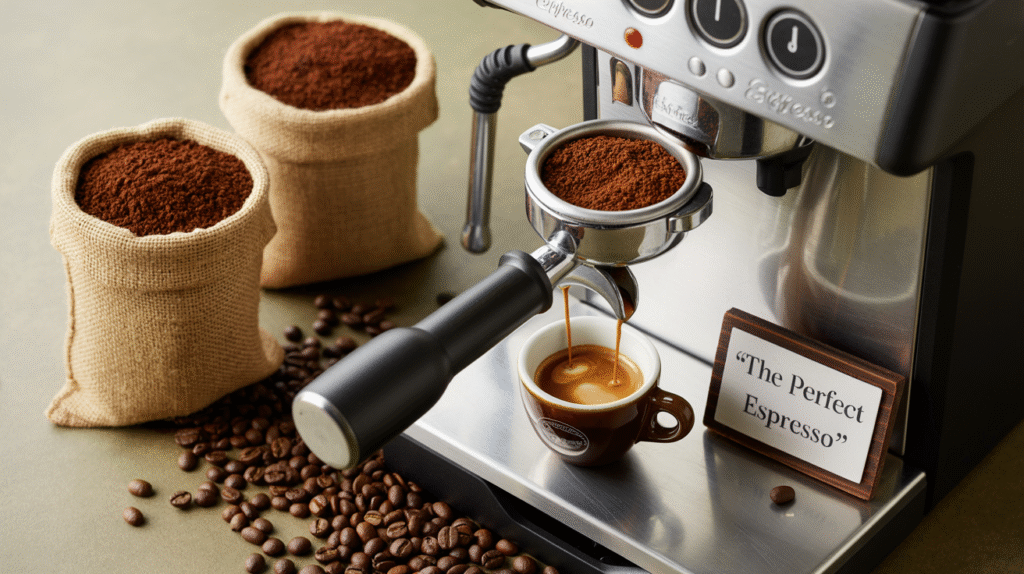
5. Best Ground Coffee for an Espresso Machine: A Complete Guide
Top recommendations for the best ground coffee for espresso machines.
The best ground coffee for espresso machines can offer an improved taste of the drink with higher-quality beans. Freshness is everything. Go for freshly ground beans or fresh pre-ground coffee with the shortest shelf life. Coffee grounds will want to have a fine grind so they can extract fully. For best results, find a combination that’s labeled for espresso, which will be medium to dark roasts and perform well as one of those rich, full-bodied shots. Some favorites include beans from popular brands like Lavazza, Illy, and Stumpton. These provide smooth, even flavor with a balanced profile and the intensity to make espressos as you like them.
How different types of espresso machines influence the choice of ground coffee.
The style of espresso machine you own is a significant determinant in the selection process for what coffee grounds to use. For coffee machines with a pressurized portafilter, it is best to use a slightly coarser ground for the coffee so that a creamy and rich crema can be formed. Non-pressurized machines, however, work better with finer and more even grounds for an ideal extraction. Your high-end system with external temperature and pressure controls could benefit from a freshly ground, premium bean in order to extract the universe of flavors. The best ground coffee for espresso machines comes in different sizes, and it’s essential to pair the size with your machine.
6. The Art of Grinding Coffee for Espresso
Grinding tips to achieve the perfect espresso grounds.
Espresso ground coffee needs to be finely ground and perfectly blended. First, use a burr grinder for grinding. Tune the grind size to your espresso machine; you’ll want it fine, but not powdery. It is too coarse and could be under-extracted, too fine, or over-extracted. You want your coffee grounds to be the perfect texture for espresso, which is approximately the same as table salt. Because ground coffee starts to lose flavor immediately, grind it fresh just before brewing. Regular cleaning of your grinder prevents stale oils from tainting the taste. If you follow these tips for grinding, you’ll always receive a rich, delicious cup of espresso.
How to avoid common mistakes when grinding coffee beans for espresso.
Automatic grinding is an advantage, but only in the case that your coffee local bruises are impossible. Do not repeat when using a grind for espresso. To begin with, use a burr grinder to grind beans with a uniform size. Do not use a blade grinder; it gives an inconsistent grind. The grind – again, very user-friendly for determining the size you need (may cause over extraction if too fine or under extraction if too coarse) based on your machine. For the most flavour, you should always grind your own beans if time allows. Portion the ideal number of beans instead to avoid wastage. Ensure your grinder is clean and there are no sedimenting coffee remains that would mask the flavors. Here are the steps that will allow you to pull consistently great espresso shots.
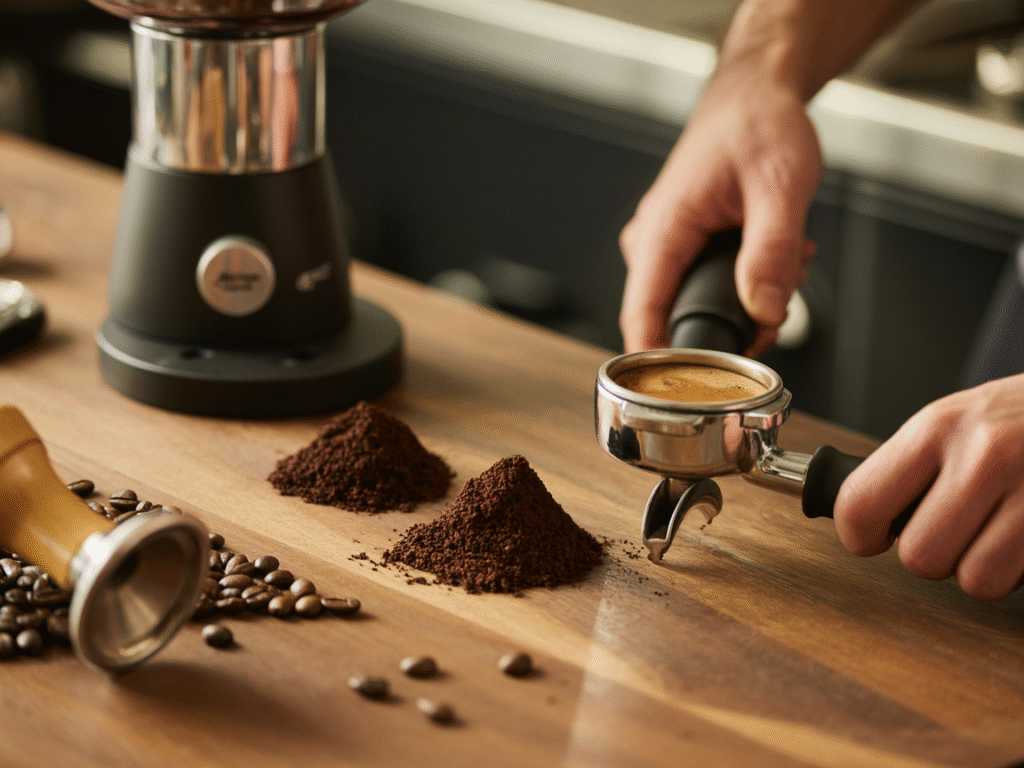
7. Factors Affecting the Quality of Espresso Grounds
The role of storage, freshness, and packaging in maintaining espresso ground quality.
And what about the storage and freshness of an espresso? Well, it’s a combo of all those things that factor into how good or bad your shot is going to turn out. Say someone was to ask anyway!!! They’re properly stored in airtight packaging anyhow, away from light and moisture, which is chilling somewhere you would actually want to eat at its best. The other biggie is freshness. Those ground beans lose their aromas and taste pretty shocking to you, actually, right after they grind them, so using them up within a few minutes or otherwise keeping them sealed air-free is a biggie. It’s vacuum sealed to slow oxidation and ensure freshness. Now, most of you will know that the best cup can only be derived from freshly roasted and high-quality beans ground immediately.
Why is the right grind consistency essential for the best espresso flavor?
The greatest espresso taste relies a lot on how even the grind is. The coffee grinds are maintained the same size so that the extraction is equal, which gives each cup the optimum mix of sweet, sour, and bitter flavors. Inequitable grinds (a variety of particle sizes) will lead to inequitable extraction and overly extracted bitter or under‐extracted sour taste. Enjoy the absence of sediments and grinds on your palate due to a fine but still strong grind, which is adjusted perfectly for espresso machines, efficiently facilitating this step in coffee creation. Burr grinders are preferable to blade grinders for their accuracy. With this focus on grind consistency and particle size, baristas will be able to optimize coffee extraction for better-tasting espresso, shot after shot.
8. Brewing the Perfect Espresso with Ground Coffee
Step-by-step instructions for brewing espresso with the proper ground coffee.
Making a great espresso depends on a variety of factors and can be avoided by doing certain things correctly. Begin with fresh-roasted beans, and ideally beans that have been roasted within the past two weeks. Grind with a burr grinder to try to have the finer, but most consistent grind size for your espresso machine. Dose 18-20 grams of mocha coffee for full flavor. Evenly tamp your espresso using pressure worthy of a hottie with a body (35 pounds). Pre-warm the machine and portafilter, and brew with 195-205°F water with a brew time of 25-30 seconds to produce 1.5-2 ounces of espresso. Experts stress clean equipment and perfect timing for a balanced, aromatic shot topped with rich crema.
How to adjust grind size and tamping technique for better results.
Fine-tuning espresso perfection depends on grind size and tamping technique. As for grind size, you want a fine texture, similar to table salt, to match the length of your extraction. Too coarse and your brew will be under-extracted; too fine and it could end up bitter. Fine-tune and test shots for a 25-30 second pull. An even pressure, usually around 30lbs, is applied for tamping to form a solid and even puck with no channels. And tamp level with a good tamper, which is highly polished. Baristas praise the same factors, plus precise tamping and fresh grounds, which is what leads to a balanced expression of bold roast taste with full coffee flavor and rich crema in an aromatic espresso shot.
Can you use coffee grounds in an espresso machine?
Yes, as long as the grounds are fine enough and well-tamped. Nail the grind to avoid cloggy or weak shots, and taste your robust, rich flavor.
Can you use ground coffee for espresso?
Espresso ground coffee will work if it’s very fine and fresh. Toscano is best served with a burr grinder to obtain uniform grinds similar to table salt in consistency for ideal extraction and flavor.
Can you use ground coffee in an espresso machine?
Ground coffee works well for espresso machines when finely ground. You want things to be something you can measure, not a universal drop range that is variable beyond your control. For a double shot, use 18 to 20 grams of coffee and tamp it down evenly.
How fine should espresso be ground?
The fine grind of espresso, like table salt. This provides for the correct extraction in 25-30 seconds. Too coarse leads to under-extraction, too fine to bitterness. Adjust using a burr grinder.
Can you reuse espresso grounds?
Secondhand espresso grounds are a no-go. The grounds are too weak and lack flavor and oils at this point. Experts recommend new grounds for each shot, for rich taste and crema.
Is espresso powder the same as ground espresso?
Espresso powder is not ground espresso. Powdered coffee is instant, dehydrated, or powdered coffee, often flavored with additives. Ready to Use Pre-Ground Espresso is the ideal grind for your espresso machine.
Conclusion: The Perfect Espresso Starts with Quality Grounds
An ideal shot of espresso is all about precision, from the whir of its grind to the water temperature. Flavor: It’s more about the freshness, grind, and storage. The precise dosing of fresh ground coffee guarantees a consistent result on the extraction to create a unique espresso, while the optimum stability of the metal tamper will deliver the ideal pressure and produce a perfect Crema. And doing it yourself with your own recently roasted beans, burr grinder, and brewed to an exact method at 25-30 seconds on a low flow setting and water of 195-205°F really unlocks the coffee. Supporting a properly maintained machine with increased output will lead to good and even tamping pressure. Good coffee is no exception. The high-quality, aromatight grinds and well-adjusted dose ensure perfect brewing all day long, making for full-bodied shots to satisfy the pickiest enthusiast.
Popular Posts
Lavazza Coffee: Experience Premium Italian Coffee Blends
Lavazza Coffee: Rich, Premium Italian Blends for Every Coffee Lovers Lavazza Coffee: Rich, Premium Italian Blends for Every Coffee Lovers...
Read MoreSugar Free Syrups: Sweeten Your Drinks Without the Calories
Sugar Free Syrup: Healthier Alternatives for Sweetening Your Drinks Sugar Free Syrup: Healthier Alternatives for Sweetening Your Drinks 1. Introduction:...
Read MoreCoffee Specialist’s Guide to the Right Powder for You
Coffee Powder Guide: 7 Types Explained by Experts Coffee Powder Guide: 7 Types Explained by Experts 1. Introduction: Why Choosing...
Read MoreThe Ultimate Guide to Perfect Espresso Grounds
The Ultimate Guide to Perfect Espresso Grounds The Ultimate Guide to Perfect Espresso Grounds Introduction: Mastering Espresso Grounds for Great...
Read MoreDiscover the Best Espresso Coffee for Rich, Bold Flavors
Master the Art of Espresso Coffee: Secrets to the Perfect Brew Master the Art of Espresso Coffee: Secrets to the...
Read More
Introduction: Mastering Espresso Grounds for Great Coffee
The espresso had better be good in every sense. The ideal shot is determined by things like bean freshness, grind size, and how you prepare it. A shot of espresso is poured with a dollop of cream resting on top. Crush your coffee routine by using a burr grinder for smooth, even grounds and keeping them fresh in an airtight container to hold in all the bold, delicious flavors. It’s seriously essential that 195-205°F brewing temperature, tamp pressure, and even extraction time (25-30 seconds) are key numbers in order to achieve a perfect neutral extraction. Lovers of coffee can have a quality espresso experience that employs good beans and practices at their best.
1. What Are Espresso Grounds?
Explanation of espresso grounds and their role in brewing espresso.
The secret to a great espresso is all in the grind of the beans. Water extracts flavors, so the size of your grind will affect how much of a particular flavor is extracted. Espresso grounds are, in fact, finely ground beans that are specially calibrated to be used with espresso machines. A grind too coarse and the water rushes through it, failing to extract enough flavour. If it is too fine, the water is held up and takes much longer to get through; this can lead to over-extraction. The perfect grind makes water extraction easy for the right amount of oils and flavors, delivering you a smooth balance shot when appropriately extracted, and is a staple to any rich and full-bodied espresso.
The process of grinding coffee beans to the right consistency for espresso.
Grinding coffee beans to the proper texture for espresso is ultra-important when making a shot. The size of the grind impacts how much water can extract flavors and oils from coffee. Espresso needs the beans to be ground extremely fine, almost to a powder, like sugar that has been granulated. It’s because the water travels too fast (due to a coarser grind), which produces weak and under-extracted espresso. On the other hand, a grind that is too fine might cause bitterness and over-extraction. Grinding the perfect amount of fresh coffee, you will make sure your espresso shots are always as good as they could be and that you get pure velvety crema for authentic professional quality coffees.
2. Common Grounds Espresso: What You Need to Know
Definition and significance of common grounds espresso.
Common Grounds Espresso Common grounds espresso are coffee beans that have been ground to a standard espresso grind specification. This is an important term to know, because it represents the average grind size you’ll use in many espresso machines. These espresso grounds are neither too delicate nor too grainy – It’s just perfect for your everyday espressos. Between the two, we feel that the pressure pods are too easy to use, which also means they can hit with inconsistent strength curves that muddy up the flavor extraction. However, understanding a thing or two about common ground espresso gives you room to determine whether or not a grind change is necessary for that custom espresso shot experience.
How to identify quality espresso grounds for consistency in brewing.
You need to select the coffee grounds very carefully if you want a good espresso. More: Espresso grounds should be uniform, like sand when ground. A good cup of common ground espresso will cut it to get most of the machines started, but you have to be consistent about shaking it. A less-than-desirable flavor is due to an uneven grind, which means extraction issues. Fresh coffee is equally essential to the extraction. It’s not just a matter of having as fresh as possible, but also the evenness with which they’ve been ground will have an impact on the quality of your grind and serve, so keep an eye on that as well to ensure you’re pulling consistently robust shots; all around, just better coffee.
3. Best Ground Espresso: Choosing the Right Beans
Key factors for selecting the best ground espresso beans.
Choosing the best ground coffee beans is one of the essential steps when looking to pull a perfect shot. It’s freshness that counts most. Grind the beans just before brewing in order to maintain their aroma. The espresso grinds need to be processed just right for that perfect brew, and after being ground, they should have the same size and the same quality in terms of extrusion. You must also take into consideration the profile of roast and always go darker because espresso requires a robust flavor. And make sure you shop around for beans from a reputable source to ensure quality. For better or worse, the beans you use shape how strong your shot is and what it’s going to taste like.
The importance of freshness and grind size in brewing quality espresso.
Great espresso depends on the freshness and fineness of the grind. The best ground coffee is one made of beans that were just roasted, and we all know old coffee doesn’t have oils anymore and will taste flat.The size of the grind is also very important. If it’s too coarse, the water will run through too fast and not get all the tastes out. Too much, and you end up with over-extraction, aka bitterness. For the best espresso, a consistent fine grind allows for fluid water to evenly pass through the coffee. Leaves no residue or clogs. Easy to clean. The ceramic burr will not produce bad, great, or lightweight. A combination of freshness and grind is essential to full-bodied, flavorful, non-bitter espresso, which is so vitally important in most coffee drinkers’ enjoyment.
4. Ground Espresso Beans: Types and Flavor Profiles
Different types of espresso grounds and their impact on flavor.
Just in case, here are varieties of coffee beans to welcome your espresso! Arabica beans bring smooth sweetness, but Robusta beans bring more of a bold and bitter flavor. Grind is the number one most important: For espresso, you grind fine to get that perfect flavor profile. As a rule of thumb, the darker you roast your coffee, the more full-bodied and strong your espresso will be, with more chocolaty flavors, while lighter roasts offer a complex, bright profile. Understanding this distinction lets you choose the right bean and roast for the espresso flavor you prefer with just the right balance.
Choosing Ground Espresso Beans to Match Your Taste
The type of ground espresso beans you choose is essential to brewing the perfect cup according to your taste. First up, give some thought to the roast level. Dark roasts are full-bodied, sweet, and intense, while lighter roasts have delicate, lively, or floral notes. Arabica beans make for a smoother, sweeter ground coffee and will be well received by those who prefer their brews on the mild side. If you like a stronger, bitter taste to your coffee, Robusta beans are ideal for you. Through experimentation with different beans, roasts, and grind sizes, you’ll reach the perfect mixture for your palate preferences.

5. Best Ground Coffee for an Espresso Machine: A Complete Guide
Top recommendations for the best ground coffee for espresso machines.
The best ground coffee for espresso machines can offer an improved taste of the drink with higher-quality beans. Freshness is everything. Go for freshly ground beans or fresh pre-ground coffee with the shortest shelf life. Coffee grounds will want to have a fine grind so they can extract fully. For best results, find a combination that’s labeled for espresso, which will be medium to dark roasts and perform well as one of those rich, full-bodied shots. Some favorites include beans from popular brands like Lavazza, Illy, and Stumpton. These provide smooth, even flavor with a balanced profile and the intensity to make espressos as you like them.
How different types of espresso machines influence the choice of ground coffee.
The style of espresso machine you own is a significant determinant in the selection process for what coffee grounds to use. For coffee machines with a pressurized portafilter, it is best to use a slightly coarser ground for the coffee so that a creamy and rich crema can be formed. Non-pressurized machines, however, work better with finer and more even grounds for an ideal extraction. Your high-end system with external temperature and pressure controls could benefit from a freshly ground, premium bean in order to extract the universe of flavors. The best ground coffee for espresso machines comes in different sizes, and it’s essential to pair the size with your machine.
6. The Art of Grinding Coffee for Espresso
Grinding tips to achieve the perfect espresso grounds.
Espresso ground coffee needs to be finely ground and perfectly blended. First, use a burr grinder for grinding. Tune the grind size to your espresso machine; you’ll want it fine, but not powdery. It is too coarse and could be under-extracted, too fine, or over-extracted. You want your coffee grounds to be the perfect texture for espresso, which is approximately the same as table salt. Because ground coffee starts to lose flavor immediately, grind it fresh just before brewing. Regular cleaning of your grinder prevents stale oils from tainting the taste. If you follow these tips for grinding, you’ll always receive a rich, delicious cup of espresso.
How to avoid common mistakes when grinding coffee beans for espresso.
Automatic grinding is an advantage, but only in the case that your coffee local bruises are impossible. Do not repeat when using a grind for espresso. To begin with, use a burr grinder to grind beans with a uniform size. Do not use a blade grinder; it gives an inconsistent grind. The grind – again, very user-friendly for determining the size you need (may cause over extraction if too fine or under extraction if too coarse) based on your machine. For the most flavour, you should always grind your own beans if time allows. Portion the ideal number of beans instead to avoid wastage. Ensure your grinder is clean and there are no sedimenting coffee remains that would mask the flavors. Here are the steps that will allow you to pull consistently great espresso shots.

7. Factors Affecting the Quality of Espresso Grounds
The role of storage, freshness, and packaging in maintaining espresso ground quality.
And what about the storage and freshness of an espresso? Well, it’s a combo of all those things that factor into how good or bad your shot is going to turn out. Say someone was to ask anyway!!! They’re properly stored in airtight packaging anyhow, away from light and moisture, which is chilling somewhere you would actually want to eat at its best. The other biggie is freshness. Those ground beans lose their aromas and taste pretty shocking to you, actually, right after they grind them, so using them up within a few minutes or otherwise keeping them sealed air-free is a biggie. It’s vacuum sealed to slow oxidation and ensure freshness. Now, most of you will know that the best cup can only be derived from freshly roasted and high-quality beans ground immediately.
Why is the right grind consistency essential for the best espresso flavor?
The greatest espresso taste relies a lot on how even the grind is. The coffee grinds are maintained the same size so that the extraction is equal, which gives each cup the optimum mix of sweet, sour, and bitter flavors. Inequitable grinds (a variety of particle sizes) will lead to inequitable extraction and overly extracted bitter or under‐extracted sour taste. Enjoy the absence of sediments and grinds on your palate due to a fine but still strong grind, which is adjusted perfectly for espresso machines, efficiently facilitating this step in coffee creation. Burr grinders are preferable to blade grinders for their accuracy. With this focus on grind consistency and particle size, baristas will be able to optimize coffee extraction for better-tasting espresso, shot after shot.
8. Brewing the Perfect Espresso with Ground Coffee
Step-by-step instructions for brewing espresso with the proper ground coffee.
Making a great espresso depends on a variety of factors and can be avoided by doing certain things correctly. Begin with fresh-roasted beans, and ideally beans that have been roasted within the past two weeks. Grind with a burr grinder to try to have the finer, but most consistent grind size for your espresso machine. Dose 18-20 grams of mocha coffee for full flavor. Evenly tamp your espresso using pressure worthy of a hottie with a body (35 pounds). Pre-warm the machine and portafilter, and brew with 195-205°F water with a brew time of 25-30 seconds to produce 1.5-2 ounces of espresso. Experts stress clean equipment and perfect timing for a balanced, aromatic shot topped with rich crema.
How to adjust grind size and tamping technique for better results.
Fine-tuning espresso perfection depends on grind size and tamping technique. As for grind size, you want a fine texture, similar to table salt, to match the length of your extraction. Too coarse and your brew will be under-extracted; too fine and it could end up bitter. Fine-tune and test shots for a 25-30 second pull. An even pressure, usually around 30lbs, is applied for tamping to form a solid and even puck with no channels. And tamp level with a good tamper, which is highly polished. Baristas praise the same factors, plus precise tamping and fresh grounds, which is what leads to a balanced expression of bold roast taste with full coffee flavor and rich crema in an aromatic espresso shot.
Can you use coffee grounds in an espresso machine?
Yes, as long as the grounds are fine enough and well-tamped. Nail the grind to avoid cloggy or weak shots, and taste your robust, rich flavor.
Can you use ground coffee for espresso?
Espresso ground coffee will work if it’s very fine and fresh. Toscano is best served with a burr grinder to obtain uniform grinds similar to table salt in consistency for ideal extraction and flavor.
Can you use ground coffee in an espresso machine?
Ground coffee works well for espresso machines when finely ground. You want things to be something you can measure, not a universal drop range that is variable beyond your control. For a double shot, use 18 to 20 grams of coffee and tamp it down evenly.
How fine should espresso be ground?
The fine grind of espresso, like table salt. This provides for the correct extraction in 25-30 seconds. Too coarse leads to under-extraction, too fine to bitterness. Adjust using a burr grinder.
Can you reuse espresso grounds?
Secondhand espresso grounds are a no-go. The grounds are too weak and lack flavor and oils at this point. Experts recommend new grounds for each shot, for rich taste and crema.
Is espresso powder the same as ground espresso?
Espresso powder is not ground espresso. Powdered coffee is instant, dehydrated, or powdered coffee, often flavored with additives. Ready to Use Pre-Ground Espresso is the ideal grind for your espresso machine.
Conclusion: The Perfect Espresso Starts with Quality Grounds
An ideal shot of espresso is all about precision, from the whir of its grind to the water temperature. Flavor: It’s more about the freshness, grind, and storage. The precise dosing of fresh ground coffee guarantees a consistent result on the extraction to create a unique espresso, while the optimum stability of the metal tamper will deliver the ideal pressure and produce a perfect Crema. And doing it yourself with your own recently roasted beans, burr grinder, and brewed to an exact method at 25-30 seconds on a low flow setting and water of 195-205°F really unlocks the coffee. Supporting a properly maintained machine with increased output will lead to good and even tamping pressure. Good coffee is no exception. The high-quality, aromatight grinds and well-adjusted dose ensure perfect brewing all day long, making for full-bodied shots to satisfy the pickiest enthusiast.
Popular Posts
How to Make Almond Syrup at Home (Better Than Store-Bought!)
Crafting Homemade Almond Syrup – A Step-by-Step Guide with Pro Tips Crafting Homemade Almond Syrup – A Step-by-Step Guide with...
Read MoreDiscover the Best Espresso Coffee for Rich, Bold Flavors
Master the Art of Espresso Coffee: Secrets to the Perfect Brew Master the Art of Espresso Coffee: Secrets to the...
Read MoreCoffee Beans: Discover the Best Beans for Every Brew
Unlocking the Secrets of Coffee Beans: Types, Roasting, and Brewing Unlocking the Secrets of Coffee Beans: Types, Roasting, and Brewing...
Read MoreDecaf Coffee: Enjoy Rich Flavor Without the Caffeine Jitters
Health Benefits of Decaf Coffee: A Smarter Way to Enjoy Your Brew Health Benefits of Decaf Coffee: A Smarter Way...
Read MorePour Over Coffee: A Simple Way to Brew Rich, Flavorful Coffee
Pour Over Coffee: How to Brew the Perfect Cup Every Time Pour Over Coffee: How to Brew the Perfect Cup...
Read MoreCoffee Urns: Perfect for Brewing Large Quantities of Coffee
Coffee Urn: Elevate Your Gathering with Perfectly Brewed Coffee! Coffee Urn: Elevate Your Gathering with Perfectly Brewed Coffee! I. Introduction...
Read More

